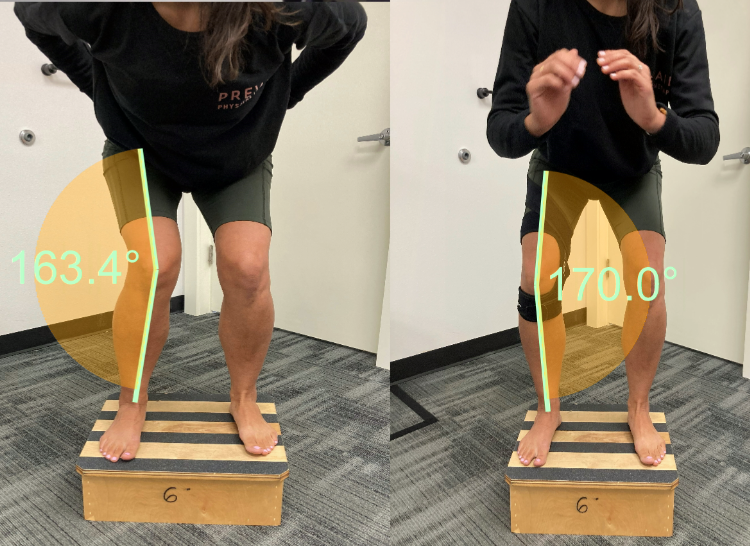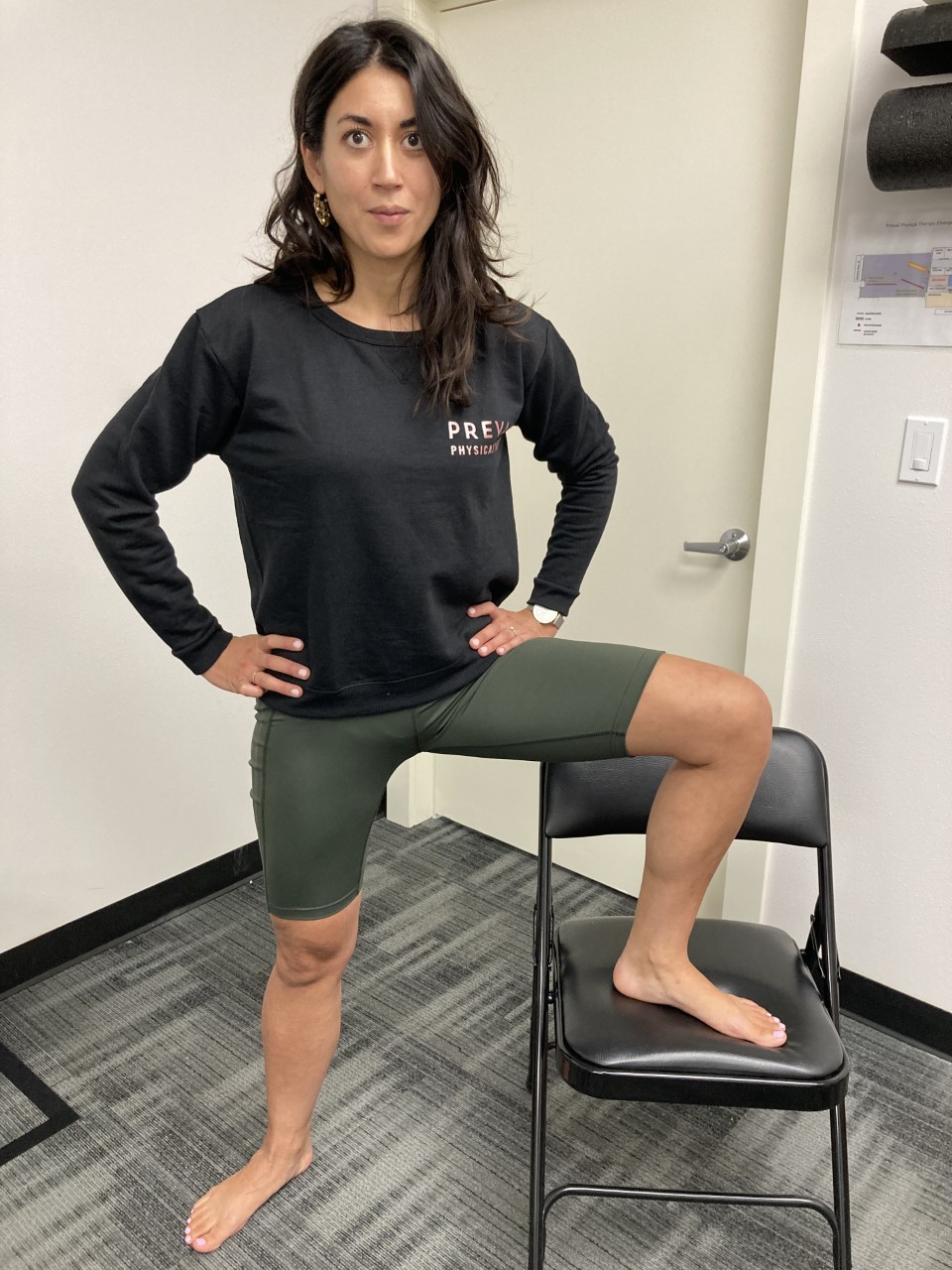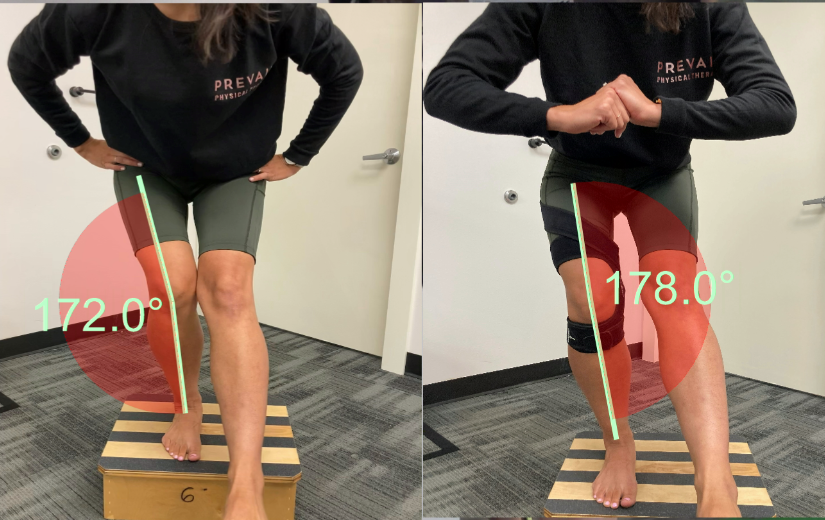The S.E.R.F. strap is one of my favorite tools for assisting with lower extremity alignment issues, especially for controlling movements in the sagittal plane. It’s not a well-known tool, so I thought I would share a bit about it.
S.E.R.F. stands for: Stabilization through External Rotation of the Femur.
The goal of the S.E.R.F. strap is to prevent movement that turns the femur inwards (knee valgus) by assisting the action of the gluteus medius and gluteus maximus. It’s almost like having an extra gluteus muscle- and who doesn’t want that?! The strap assists keeping the femur facing forward during functional movements such as running, cutting, or any other kind of dynamic movements.
It was originally developed in conjunction with Chris Powers, DPT at University of Souther California for treatment of patellofemoral pain. Unlike many other traditional braces that attempt to control motion of the patella directly at the patella, the goal of the S.E.R.F. strap is to control motion at the hip- often the source of patellofemoral symptoms. Because many lower extremity dysfunctions start with the knee valgus (femoral internal rotation and ADDuction) pattern that is common in patellofemoral syndrome, I find this S.E.R.F. strap helpful to treat many conditions including:
-Iliotibial band syndrome
-Patellofemoral pain syndrome
-Patellar tendonitis
-Achilles tendonitis
-Gluteal tendonitis
-Issues related to foot pronation
-Issues related to hip adduction or internal rotation

Every time I recommend this for a patient, there is always a bit of a challenge with putting it on. DonJoy, the maker of the strap, has instructions here, but I like to add a few of my own tweaks to make it effective for the action I am trying to target.
NOTE: Make sure you order the correct SIDE of your body (left vs. right) and the correct size (see the size chart).
HOW TO PUT IT ON:
PHASE 1- SITTING:
- Start by capturing the knee. At the very bottom, there is a sleeve. Put it on like a sock and slide it up to the top of the calf, just below the kneecap.
- The bottom strap wraps below the knee, snugly but not tightly.
- You can use the velcro marker to assist with marking the alignment for future uses.
- The DonJoy logo should by on the inside of the knee.
- Anchor along the knee. The window comes along the inside of the knee cap, the rest wraps around the knee not tight, but firm, then follows the line of the velcro and the inside upper edge of the knee.
PHASE 2- STANDING:
- Stand in “Captain Morgan position.” (note: this is where my instructions deviate from the DonJoy instructions)
-”Captain Morgan” position creates relative hip extension/abduction and external rotation.
-The easiest way to find this position is to stand with your other leg on a chair, then shift your pelvis and hips towards the leg on the chair.

- Wrap the hip/pelvis. The strap wraps up the thigh, around the top of the pelvis, NOT at the hip, pulling very snugly. Experiment with how much tension to use for effective use.
You should feel a bit of outward movement from the strap when you walk/run. You can still over-power the external rotation if you have a strong medial deviation at the thigh, but it will give you good feedback and proprioception about more neutral alignment during your activity.
WHEN TO USE IT:
Wear during activities that create symptoms, especially running or sport. You don’t have to wear it all the time, unless there are symptoms all the time. If walking is an issue, wear it for that.
I also like using this in the clinic after a gait analysis, I’ll put a S.E.R.F. strap on, then re-video to see if it helps make the changes we want.

NOTE:
I’ve also used this S.E.R.F. strap for people who have the opposite issue at the femur. I will put a LEFT strap onto a RIGHT leg to address knee varus. If you understand the mechanics behind it, you can use your intelligence and creativity to use it however you would like.
ANOTHER NOTE:
This is not a paid promotion. I don’t work for DonJoy, nor do I sell this product in my clinic. It is just a helpful tool. I keep a few on hand for demonstration purposes. You can purchase this at any of the major online retail stores.
-Bruk Ballenger, PT, DPT
Bruk Ballenger is the owner and founder of Prevail Physical Therapy in Shoreline, Washington. He has 30 years of experience as a Physical Therapy clinician. He enjoys treating complex lower extremity issues and meeting patients at their current functional level and taking them above and beyond.
REFERENCES:
Earl JE, Hoch AZ. A proximal strengthening program improves pain, function, and biomechanics in women with patellofemoral pain syndrome. Am J Sports Med. 2011: 39: 154-163
Fukada TY, Rossetto FM, Magalhaes E, Bryk FF, Lucareli PR, de Almeida Aparecida Carvalho N. Short term effects of hip abductor and lateral rotator strengthening in females with patellofemoral pain syndrome: A randomized controlled clinical trial. J Orthop Sports Phys Ther. 2010; 40:736-742.
Herrington L. Effect of a SERF strap on pain and knee-valgus angle during unilateral squat and step landing in patellofemoral patients. J Sport Rehabil. 2013; 22(1) :27-32. https://pubmed.ncbi.nlm.nih.gov/22902567/
Powers, CM. The Influence of Abnormal Hip Mechanics on Knee Injury: A Biomechanical Perspective. J Ortho Sports Phys Ther. 2010;40(2). 42-51. https://www.jospt.org/doi/full/10.2519/jospt.2010.3337#_i2
Selfe J, Thewlis D, Hill S, Whitaker J, Sutton C, Richards J. A clinical study of the biomechanics of step descent using different treatment modalities for patellofemoral pain.Gait Posture. 2011; 34: 92-96
